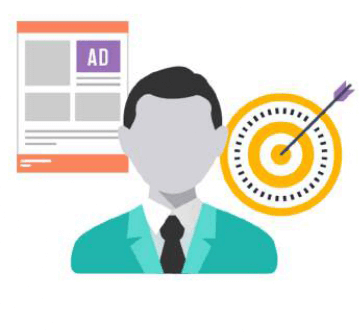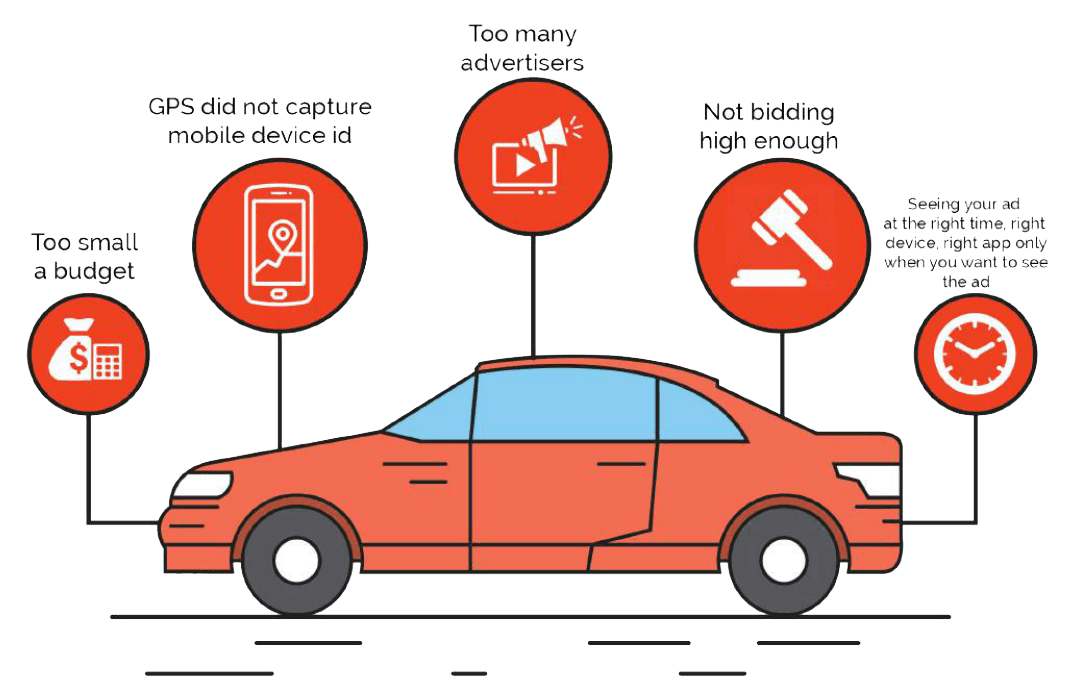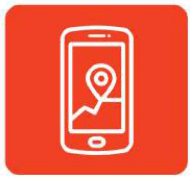Top 20 Questions To
Ask Your
Geofencing
Provider


Top 20 Questions To Ask Your Geofencing Provider
Our agency, Digi-VUE Advertising often gets swarmed with questions from organizations and companies who inquire about geofencing marketing. All questions are important but some are more important than others.
In order to ensure you’re choosing the right geofencing marketing provider that fits your needs and extracting the most valuable information you need to make a decision, we’ve compiled a list of 20 questions with added context from our team members and partners at Digi-VUE Advertising to help guide you through your journey in choosing a geofencing provider.
How precise can you get with your geofencing?
How small can the geofences be built?
Many people mention they have geofencing capabilities, but may not necessarily provide geofencing as precise as others. For example, simplifi is able to build their geofences as small as the contours of buildings (25 square feet in many cases), while others tap into the
wifi networks of particular buildings and locations, and reach mobile devices that ping off of such networks.
We know of several that can only build their geofences around a block, but not a building. The more precise you can get, the more targeted your advertising will be. That is the crux behind geofencing..targeting people based on their intent and knowing someone’s physical presence in a location can indicate intent buyers. So this is a critical question worth asking.
Up to how many buildings or locations can you geofence in a given geofencing marketing campaign?

Some geofencing providers charge based on the number of buildings and locations you want to target. For example, some will require you to spend $1,500 on just 1 building, which if you think about it doesn’t make sense and won’t fully benefit your marketing needs. What happens if you cannot exhaust your budget on just that 1 location? Also, you are limiting your reach and potential to target more people who can be ideal customers when you are only given 1 location you are allowed to geofence.

The better geofencing companies will not limit your geofencing targets, and they’ll also provide you with proper strategy and recommendations on the budget you should allot over various geofencing locations. For exam-ple, at Digi-VUE Advertising we suggest $1,500 for every 20 lo-cations you intend to target. It’s not an exact science, but it allows you spread your marketing risk a bit more and also target more buildings so you can then determine the ones that are not highly engaging or driving proper foot trafic and then hone your marketing dollars on the loca-tions that are driving sales and engagement.
Where are the ads delivered? How do people see the ads?

Some platforms are able to deliver ads primarily on Mobile Apps. while others can focus on Mobile Browsers. Also, some companies can target mainly desktop, tablet, and mobile devices, while others can also deliver ads via Connected TV. It’s important to remember that most will
deliver ads via Mobile Apps with the main reason being mobile app users typically spend the majority of their time on mobile apps, not within browsers on their smart phones. So if a geofencing provider indicates they serve ads primarily through mobile apps. it is not a bad thing. The key is knowing whether they’re able to black list apps that are pulling in customers and leads for the business and the brand.
How long does my audience stay within my customer segment pool?
Within our geofencing suite, we have one platform that can keep the audience inside the segment pool for up to 30 days. While we have another that can keep the users there far longer than that. You also want the flexibility in allowing an audience pool to drop off after 1
day, 1 week, or even 2 weeks.
For example, personal injury attorneys can geofence ER centers to target people who may have been in an accident. But keeping them in your audience pool for 1 month is not practical strategy given most have made a decision on needing a personal injury attorney
within 2 weeks of an accident.
This is the key reason you want to ask this question of geofencing companies.
Can I capture people during set periods of time?
Some geofencing platforms allow you to “capture” people during set times of the day or week. We’re not referring to targeting and serving ads to people during set times of the day or week, but capturing. This can be important if you are more of a B2B advertiser and your intention is to target employees working at a location versus the customers frequenting or visiting those locations. You know for example that if the same person visits a location 5 days in a row, there’s a good chance they work at that location.
This question leads companies with the strategic latitude to build a more precise customer audience and limit wasted spend on people you don’t intend to target.
How exactly does your geofencing marketing work? What are the technical aspects from the beginning to the end of the geofencing process?
I can’t speak to the other geofencing platforms on the market, but here is a baseline on how our geofencing marketing process works.
Avirtual geofence is traced around an event location where the advertiser wants to build an audience based on their visit to that particular location during a set, scheduled timeframe. When people enter the geo-fenced location during the set timeframe, they will then become a part of an audience that can later be targeted to following the event. As the user visits various apps downloaded on their phone (Angry Birds, Weather Channel, Emoji Keyword, Words With Friends) or browses the internet on the mobile browsers, they begin to see ads from the said advertisers. Users can see those Ads for 1 day and up to 30 days after he/she has entered the geo fence.

What are your CPM's and monthly minimum spend requirements for me to utilize your platform?

This is important because we know some companies that charge all the way up to $20.00 cpm while others go as low as $5.00 CPM. And for monthly minimums, some require $20,000 per month, while others go as low at $250 per month.
We only provide details on our minimums and cpm’’s to companies who are serious about potentially working with our firm. Email us or submit your information and one of our strategists will be in touch.
What industries do the best with geofencing marketing?
There are many industries that perform well with geofencing, but these are the top ones we’ve noticed excel and benefit from geofencing:

Car Dealerships

Retailers

Restaurants/ Food/Beverage

Franchises

Legal

Healthcare and Medical

Event Marketing

Banking

Education

Real Estate

Politics & Advocacy
We’ve noticed that those who care solely about lead generation do not excel well with geofencing. Also, app download companies typically have meager results with geofencing. Asking this question to your provider will give you additional perspective on how well their geofencing solutions work across industries, but also the level of transparency they’re really providing you with.
Can geofencing be used solely for lead generation?

It can be. But our team advises against clients utilizing geofencing as a stand-alone tactic for lead generation purposes. You have to remember geofencing marketing is still disruptive advertising where you’re putting your message in front of someone who never originally inquired about your services or product unlike SEO or Google Adwords. It’s disruptive marketing so you need to give a compelling reason for that person to act.
It can be effective for lead generation, but it depends on the vertical, industry, creative Ads, website you’re sending traffic to, who you are geofencing, and the special offer itself that you are putting in front of your audience. And even when all those things are perfectly aligned, not everything turns out as well as you’d expect.
How can I see my own ads if I walk inside the geofences?
This can be a sore subject with many clients that want proof the campaign is working and whether advertisers are seeing their own ads. However, it can be very challenging for clients who walk inside their own geofences to see their own ads for several reasons:

See article to learn more about why advertisers cannot see their own ads.
Why Can’t I See My Own Ads –
How do you develop the best strategy for any geofencing project?
We actually believe this question is more important than the geofencing capability itself. There are many platforms with geofencing nuances to deploy for organizations, but if they don’t understand your business or even better how to use geofencing to build the proper strategy, then the geofencing plan can be a total bust.
Here is a great example. Some geofencing platforms will charge $1,500/month and give you the chance to place geofences around up to 3 locations only. But how do you know those were the right locations that would drive customers to your brand? Why geofence 3 when you can start bigger with 15 – 20 geofences? Now with 15+ geofencing targets, you can determine the ones that are driving customers versus putting all your eggs in a few geofencing baskets and then having to start from scratch if those geofences were not successful.
So understanding process and strategy from your geofencing provider will be paramount to success and knowing whether the geofencing provider is simply an order taker or a strategic partner to your organization.
Can you measure foot traffic with your geofencing product?
Some platforms allow you to measure foot traffic back to the location you want to drive foot traffic to. Our platform does allow us to measure those who have seen or clicked on your ads AND then walked inside your physical location where your retail or office is located.
We utilize the same geofencing technology to deploy this level of measurement so we can provide additional insights into the successes or challenges a particular geofencing cam- paign is realizing for a client.

Can you geofence in international and global markets?
Geofencing is still a relatively new form of marketing, so many providers do not have the technical capabilities of geofencing overseas. I know at Digi-VUE Advertising, our team can target people and geofence in overseas markets including Canada, UK, Mexico and other markets. But it’s important to remember that the delivery of Ads are contingent on those mobile apps being utilized in those markets. We have over 600,000 mobile apps we can serve ads on, which is a lot of mobile apps that helps with delivery.
What reporting does your agency provide and do I have access to it? Do you have a sample report you can share with our team?
Most organizations indicate they provide real time analytics and reporting, but the key is in the details and the specific metrics you get from such reporting. For example, you won’t get a lot of insight from a report that simply shares impressions, clicks, and click through rates. Here are particular metrics you should ask your geofencing provider:

Can you report on impressions, clicks, and conversions down to individual geofencing targets?

Can you share which domains or mobile apps are translating into engagement and conversions?

For multi location campaigns in which I have multiple stores, can you report on which loca- tions are getting the bulk of walk ins and conversions?
Try to get as much detail as possible. This will help you determine both how good their reporting may be, but also how strategic the team can get with determining how best to optimize future geofencing campaigns.
Can I make changes during the campaign?
Some geofencing providers do not allow for changes to campaigns in real time. Which we agree, you want to give a campaign couple weeks breathing time. But what if you wanted to change out creative ads? Or you wanted to add a few additional geofencing locations? That’s where flexibility and nimbleness matters to ensuring geofencing campaigns are given the greatest time to succeed. That is something our team at Digi-VUE Advertising does believe in 100% and fully support.
What does your Onboarding process look like?
Understanding the geofencing provider’s launch process will be useful as you determine everything you need to get a campaign launched.
What creative ad sizes do I typically need?
Some providers recommend furnishing a host of creative ad sizes. But we at Digi-VUE Advertising recommend a maximum of 7 that covers both desktop, laptop, and tablet devices:

- 300 x 250 pixels
- 300 x 50 pixels
- 320 x 50 pixels
- 728 x 90 pixels
- 160 x 600 pixels
- 250 x 250 pixels
- 1200 x 628 pixels
Knowing this will prepare your team in developing the creative assets you need to launch your geofencing campaign.
How does geofencing advertising fit in with all my other advertising?
Hearing a geofencing provider go into detail on this will give you insights on whether they’re trying to sell you a bill of goods or looks at the big picture for your organization.
We believe geofencing makes for a great compliment to any existing marketing you may be deploying. People will think that geofencing marketing is the only thing you should be doing to build brand awareness and generate sales and leads, but rarely does that work in a vacuum except for the top verticals we mentioned above. Our most successful clients will incorporate geofencing with social media advertising, Google Adwords, SEO and other forms of offline marketing to build a 360 surround marketing effect.
The only time we suggest geofencing as a stand-alone solution are particular verticals that perform incredibly well with geofencing or when you want to utilize geofencing for event targeting or standalone events.
Why are you better than the other geofencing providers?
We cannot speak to all the other platforms or companies that may white label, but here is why Digi-VUE Advertising is strong in delivering our geofencing solutions:

Are you able to white label your geofencing platform?
Most demand side platforms (DSP’s) allow for licensing or effectively utilizing their platform, but they also require a minimum monthly spend of $15,000 – $20,000 per month.
That’s where some digital agencies like ours come in where we will choose on a case by case basis to white label our geofencing solution to other marketing and digital agencies. The CPM charges and monthly minimum’s will be lowered in order to provide a reasonable margin for the agency to take advantage of.
The attractive part about white labeling is the agency will provide strategy, execution, full scale white label reporting, and on going optimization’s. You simply sit back and sell geofencing marketing while your white label partner does all the heavy lifting.
